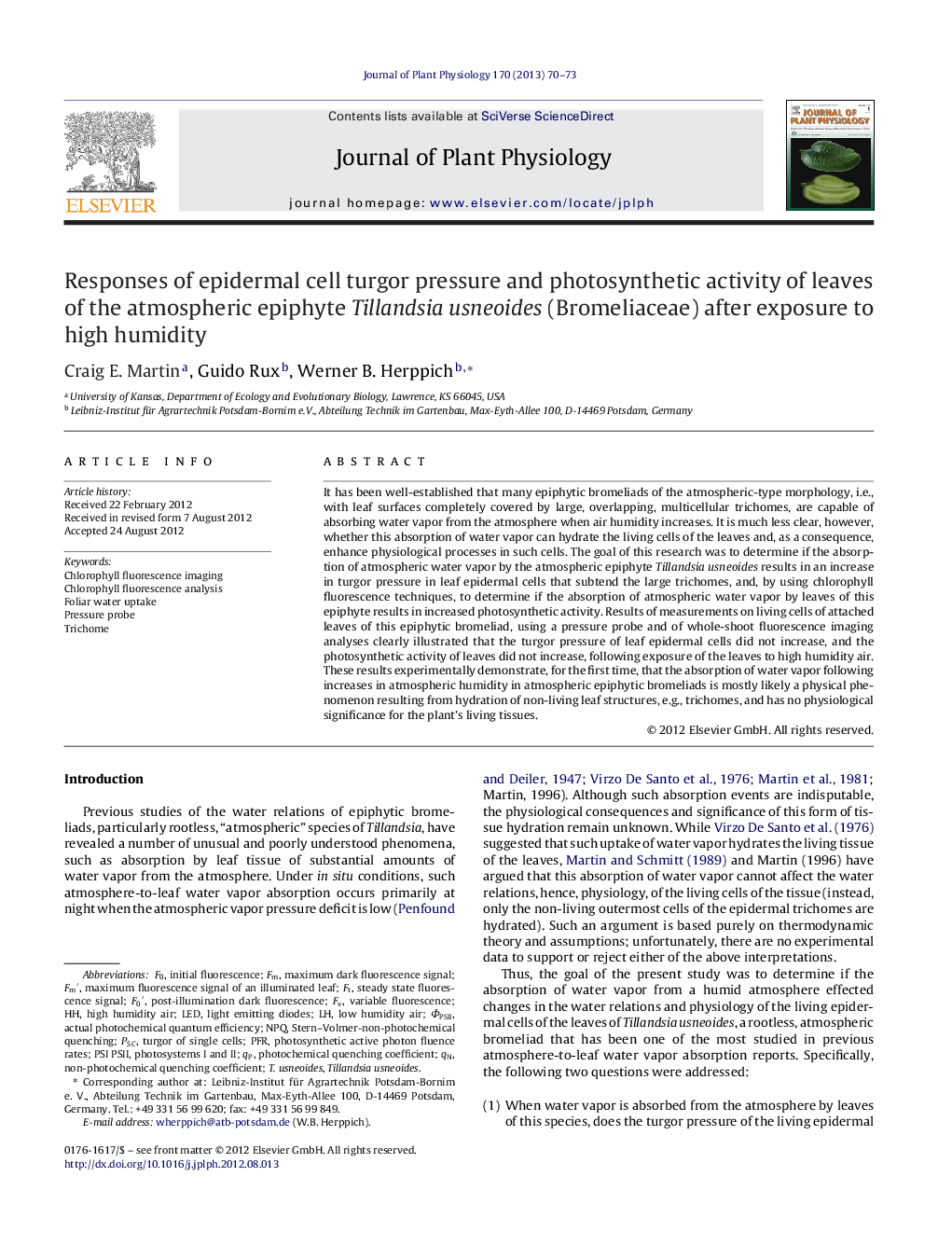| Article ID | Journal | Published Year | Pages | File Type |
|---|---|---|---|---|
| 2056107 | Journal of Plant Physiology | 2013 | 4 Pages |
It has been well-established that many epiphytic bromeliads of the atmospheric-type morphology, i.e., with leaf surfaces completely covered by large, overlapping, multicellular trichomes, are capable of absorbing water vapor from the atmosphere when air humidity increases. It is much less clear, however, whether this absorption of water vapor can hydrate the living cells of the leaves and, as a consequence, enhance physiological processes in such cells. The goal of this research was to determine if the absorption of atmospheric water vapor by the atmospheric epiphyte Tillandsia usneoides results in an increase in turgor pressure in leaf epidermal cells that subtend the large trichomes, and, by using chlorophyll fluorescence techniques, to determine if the absorption of atmospheric water vapor by leaves of this epiphyte results in increased photosynthetic activity. Results of measurements on living cells of attached leaves of this epiphytic bromeliad, using a pressure probe and of whole-shoot fluorescence imaging analyses clearly illustrated that the turgor pressure of leaf epidermal cells did not increase, and the photosynthetic activity of leaves did not increase, following exposure of the leaves to high humidity air. These results experimentally demonstrate, for the first time, that the absorption of water vapor following increases in atmospheric humidity in atmospheric epiphytic bromeliads is mostly likely a physical phenomenon resulting from hydration of non-living leaf structures, e.g., trichomes, and has no physiological significance for the plant's living tissues.
